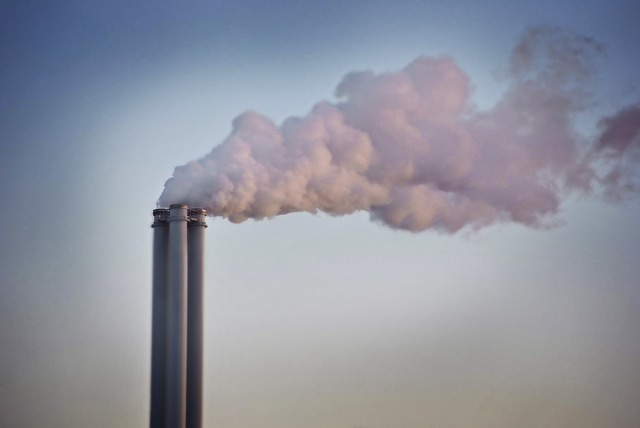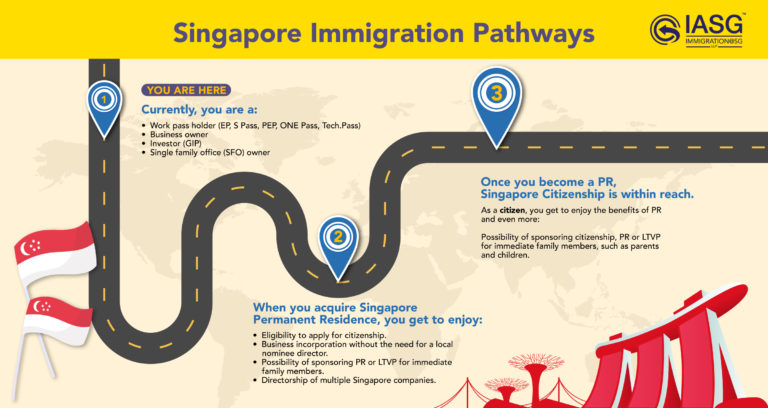Singapore has announced its commitment to green goals and sustainability solutions in its Green Plan 2030. However, like many modern cities, it faces significant challenges related to pollution and carbon emissions.
Singapore’s Air Pollution, Waste, and Carbon Situation
Solving problems is a good business approach for profitability and longevity, and climate change has been a huge problem for many years now. Almost every country is now looking at ways to slow down the rate of global warming, hoping to provide a liveable environment for the future generations. Before we explore opportunities in this sector, we need to take a deep dive into the problems first.
Air Pollution
According to the World Health Organization (WHO), air pollutants, such as methane and black carbon, are powerful short-lived climate pollutants (SLCPs) that contribute to climate change and ill health.
Singapore’s air quality is influenced by both local and regional factors. Locally, vehicular emissions, industrial activities, and construction contribute to air pollution. Regionally, transboundary haze from forest fires in neighbouring countries, particularly Indonesia, exacerbates air quality issues, especially during the Southwest monsoon period from August to October. Haze particles are particularly fine at 2.5 microns or smaller and can affect the hearts and lungs of human beings and animals. People who are already at risk of heart and lung conditions such as asthma and heart failure can be greatly affected.
Businesses and schools can be affected by haze when people are encouraged to stay at home. In 2015, schools were closed due to the limited visibility caused by the haze from Indonesia. The worst in 16 years at the time, the Pollutants Standards Index (PSI) hit around 400, where any PSI reading over 300 is considered dangerous. In Indonesia, the PSI reached nearly 2,000 in some parts of the country, especially those that are near the spots of illegal forest burning, which was the cause of the haze.
Waste Problem
With four incineration plants, Singapore is renowned for its efficient urban planning and waste management. A challenging feat, this is on the back of a limited land space paired with high consumption levels amongst its 6 million residents. However, burning waste, especially plastic which is not biodegradable, can release carbon dioxide (CO2) and other harmful pollutants such as methane into the atmosphere.
Experts have sounded the alarm that Singapore’s Semakau landfill is quickly being filled up. Over 2,000 tonnes of ash from the incinerated wastes and non-incinerable waste-like sludge are sent to the island every day. Singapore’s recycling campaign has been running since 2001 but success is elusive. While recycling bins are available conveniently at housing estates, residents have not been putting in the right materials as indicated. In fact, these recycling bins have been used as just another rubbish bin. This makes it difficult for waste management companies to separate the recyclable and non-recyclable materials.
On the other hand, organic waste decomposing in landfills such as in Semakau Island produces methane, a greenhouse gas far more potent than CO2. Other issues such as higher rat sightings also arise in part due to improper waste disposal.
Carbon Emissions
A carbon footprint is the total amount of greenhouse gases, particularly carbon dioxide (CO2), emitted directly and indirectly by human activities. As a small country, Singapore contributes 0.1% of global emissions. However, in 2021, Singapore ranked 21st out of 155 countries/territories in terms of CO2 emissions per capita and 1st in the highest per capita emissions.
This significant contribution is largely due to its high energy consumption driven by industry, transportation, and residential sectors. Despite its small size, Singapore’s role as a major shipping and aviation hub contributes to its carbon footprint. Its high use of air conditioners in homes, offices, and all public spaces also make up this contribution.
The use of fossil fuels such as the use of coal, oil, and natural gas for electricity generation and heating is one of the largest sources of carbon emissions. Renewable energy sources like wind, solar, and hydroelectric power can significantly reduce these emissions, thus, the global transition towards green energy. Below are examples of high carbon emissions produced in Singapore:
- Electricity and Heating: The energy used for heating, cooling, and powering residential and commercial buildings is a significant source of carbon emissions. The use of household appliances and electronics, especially in tech-savvy Singapore, also contribute to the carbon footprint. Located right on the equator, Singapore receives ample sun all year round. Solar panels have already been installed in public spaces, residential buildings, government-owned buildings, and schools.
- Transportation: Vehicles powered by gasoline or diesel such as aeroplanes, ships, trains, and even cars and contribute significantly to carbon emissions. Singapore’s Changi airport has started its eco-friendly and sustainable practices by installing solar panels, recycling water for its cooling systems and landscaping, and recycling and food waste programs. The adoption of electric vehicles (EVs) can also help mitigate this impact.
- Manufacturing: Factories and industrial processes, particularly those involving cement, steel, and chemical production, emit substantial amounts of CO2. In January 2019, Singapore implemented a carbon tax rate of S$5 per tonne of CO2 equivalent for five years till 2023, mitigating 80% of total greenhouse gas (GHG) emissions from around fifty facilities in the manufacturing, power, waste, and water sectors in Singapore.
- Construction: The construction industry is energy-intensive and produces emissions through the use of machinery, transportation of materials, and production of building materials like concrete and steel. Buildings in Singapore account for over 20% of the total carbon emissions. They also consume more than a third of the total electricity produced by the whole country. By May 2022, Singapore has managed to achieve 49% greened buildings, with a target of 80% by 2030.
- Water Usage: The processes involved in pumping, treating, distributing, and heating water consume energy, often derived from fossil fuels and in Singapore’s case, include energy from waste incineration, contributing to carbon emissions. Treating wastewater has a higher carbon footprint, as is the case for Singapore’s Newater Plant. Expecting a doubled demand in water consumption by 2065, Singapore’s National Water Agency, PUB, estimates a carbon footprint of MT CO2-eq for the increased use of its water desalination and Newater plants. PUB aims to achieve net-zero emissions by 2045.
Effects of Air Pollution, Waste Problem, and Carbon Emissions
Prolonged exposure to polluted air and high levels of greenhouse gases can lead to respiratory, cardiovascular diseases, cancer, and even premature death.
High carbon emissions also contribute to global warming and climate change such as melting ice caps and global increase in average temperature, resulting in rising sea levels and extreme weather patterns such as acid rain. Acid rain can cause respiratory diseases or make it worse in those who already have them such as asthma and bronchitis. It can also burn human skin upon contact.
Waste problems can result in contamination of soil, water bodies, and air pollution, which can affect food and water sources as well.
Government Initiatives and Policies
The Singapore government has been working towards a sustainable future through various initiatives and policies. In December 2023, the government announced the cease of bottled water served in meetings as one of the initiatives to reduce single-use plastic. Other initiatives include shutting down elevators during non-peak hours and air conditioning temperature increased to 25 degree celsius.
Green Plan 2030
Launched in February 2021, the Singapore Green Plan 2030 outlines a comprehensive roadmap towards sustainable development. Key targets include:
- Energy Reset: Increasing solar energy deployment to at least 2 gigawatt-peak by 2030 and reducing the waste sent to landfills by 30%.
- Green Economy: Attracting green investments and positioning Singapore as a leading centre for green finance and carbon services.
- Resilient Future: Enhancing climate resilience by protecting coastal areas and enhancing food security through local production.
Carbon Tax
Singapore introduced a carbon tax in 2019, making it the first Southeast Asian country to implement such a measure. The tax, set at an initial S$5 per tonne of CO2 equivalent, aims to incentivise companies to reduce emissions and adopt cleaner technologies. The carbon tax rate will be raised to $25/tCO2e for two years in 2024 and 2025, $45/tCO2e for another two years in 2026 and 2027, and might be further increased to $50-80/tCO2e by 2030.
Technological and Community Solutions
Renewable Energy Adoption
Singapore is actively investing in renewable energy sources, particularly solar power. The limited land area poses a challenge, but innovative solutions like floating solar farms on reservoirs are being developed to maximise solar energy generation. The first will be constructed in 2025.
Green Buildings
The Building and Construction Authority (BCA) has introduced the Green Mark Scheme, which encourages the adoption of sustainable building practices. This scheme certifies buildings that meet certain environmental standards, promoting energy efficiency, water conservation, and indoor environmental quality.
Electric Vehicles (EVs)
To reduce vehicular emissions, Singapore is promoting the adoption of electric vehicles (EVs). The government has set a target to phase out internal combustion engine vehicles by 2040 and is expanding the EV charging infrastructure to support this transition.
Public Awareness and Community Engagement
Public awareness campaigns and community engagement are crucial for driving behavioural changes towards sustainability. Initiatives such as educational programs, recycling campaigns, and incentives for reducing energy consumption help foster a culture of environmental responsibility among citizens.
Challenges and Future Outlook
Singapore’s initiatives and push in the green economy has increased the demand for carbon professionals. However, the high demand is met with low supply of local experts. Singapore’s open immigration policy allows foreign professionals to come to the country and contribute their expertise. Despite the progress, Singapore faces ongoing challenges in balancing economic growth with environmental sustainability. The high population density and limited natural resources require innovative and integrated solutions. Continued investment in technology, policy adjustments, and regional cooperation will be essential to overcoming these challenges.
Business Opportunities in Mitigating Carbon Footprint
While green technology is still developing at this stage, below are some ideas that are not yet readily available in the market and might be able to help people and businesses adopt more sustainable practices.
-
Renewable Energy
Transitioning to renewable energy sources like solar, wind, and hydropower. A good example would be a business selling solar-harvesting windows for high rise buildings such as HDB and condos. Currently there are only solar panels to be placed on roof-tops of landed housing and commercial and industrial buildings.
-
Energy-Efficient Appliances
Using energy-efficient appliances and improving home insulation. In April 2024, Singapore gave out climate vouchers to all HDB households to encourage its residents to replace their high-powered home appliances such as refrigerators and washing machines into energy-saving appliances. Products are required to be labelled with its energy efficiency information, however, products that are with 4 or 5 ticks, which are the best, are not many.
-
Solar-Powered Vehicles
Adopting a 100% solar-powered vehicle may prove challenging due to the power needed. However, a solar-harvesting electric vehicle (EV) might be the solution. Instead of supporting a vehicle’s power with gasoline to power up an EV, solar cells might be a good replacement, especially for a country that receives so much sunshine like Singapore.
Carbon Situation in Singapore
Singapore’s proactive approach to addressing carbon emissions and pollution through comprehensive policies, technological innovations, and community engagement sets a commendable example for urban sustainability. While significant challenges remain, the commitment to a greener future holds promise for improved air quality, reduced carbon footprint, and a resilient environment for future generations.
With the support of the government and a robust financial landscape, Singapore makes a good test market. Foreign entrepreneurs and businesses in the green sector should set up a business in Singapore to take advantage of its carbon situation. For more information on business incorporation in Singapore, Whatsapp Immigration@SG (IASG) at +65 8766 1966 or email to info@iasg.com.sg.







